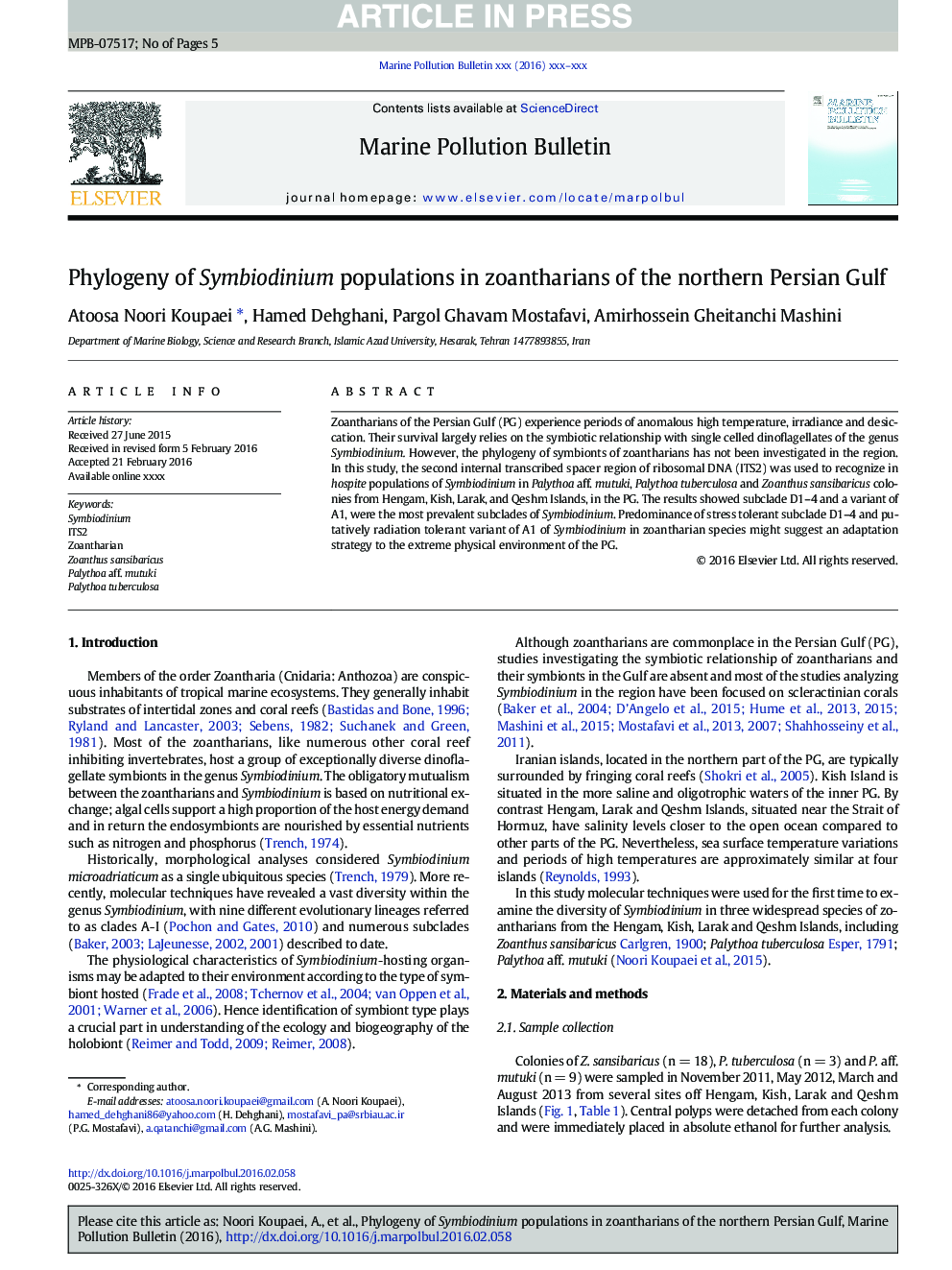| Article ID | Journal | Published Year | Pages | File Type |
|---|---|---|---|---|
| 6356025 | Marine Pollution Bulletin | 2016 | 5 Pages |
Abstract
Zoantharians of the Persian Gulf (PG) experience periods of anomalous high temperature, irradiance and desiccation. Their survival largely relies on the symbiotic relationship with single celled dinoflagellates of the genus Symbiodinium. However, the phylogeny of symbionts of zoantharians has not been investigated in the region. In this study, the second internal transcribed spacer region of ribosomal DNA (ITS2) was used to recognize in hospite populations of Symbiodinium in Palythoa aff. mutuki, Palythoa tuberculosa and Zoanthus sansibaricus colonies from Hengam, Kish, Larak, and Qeshm Islands, in the PG. The results showed subclade D1-4 and a variant of A1, were the most prevalent subclades of Symbiodinium. Predominance of stress tolerant subclade D1-4 and putatively radiation tolerant variant of A1 of Symbiodinium in zoantharian species might suggest an adaptation strategy to the extreme physical environment of the PG.
Keywords
Related Topics
Physical Sciences and Engineering
Earth and Planetary Sciences
Oceanography
Authors
Atoosa Noori Koupaei, Hamed Dehghani, Pargol Ghavam Mostafavi, Amirhossein Gheitanchi Mashini,
